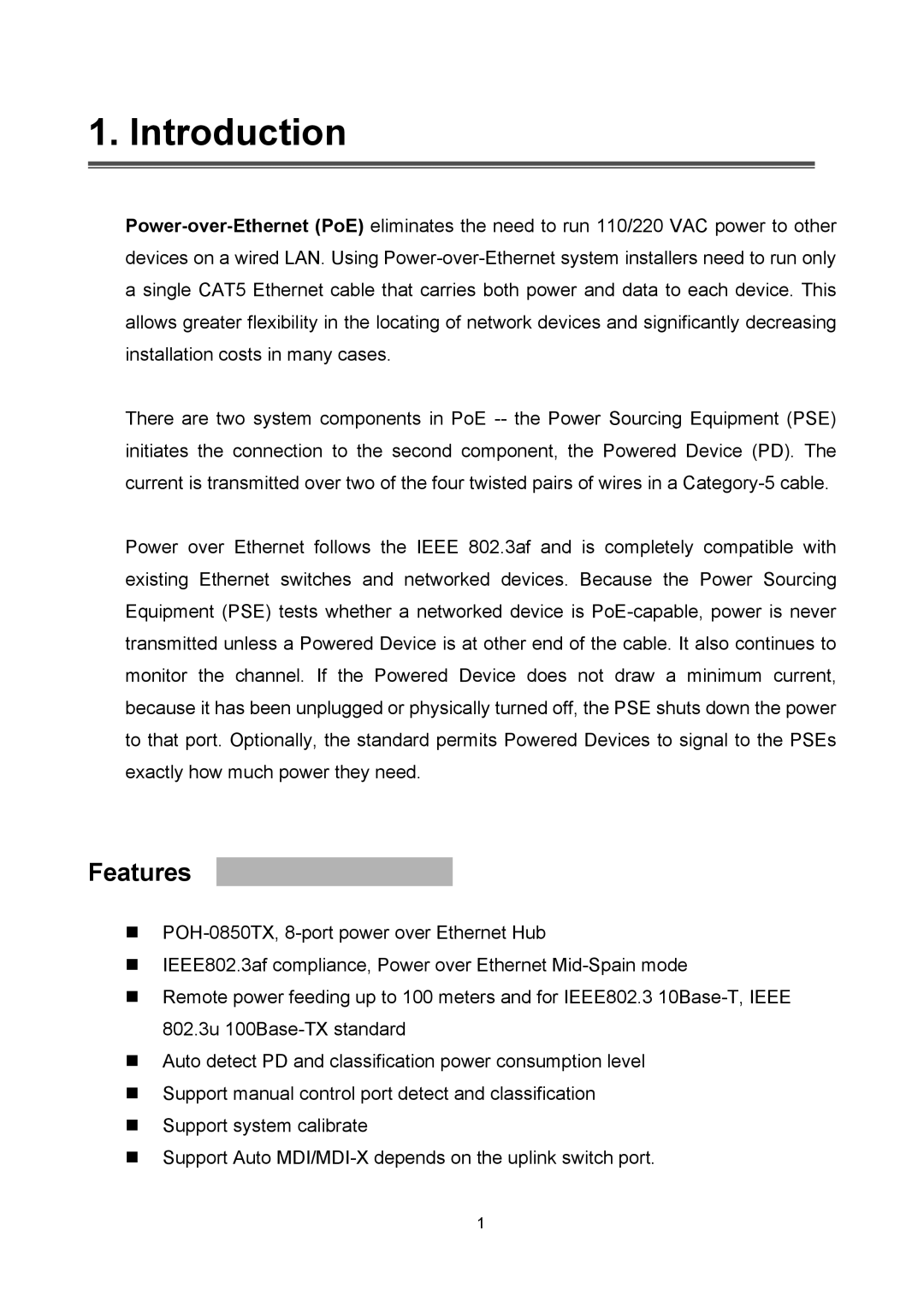POH-0850TX specifications
The LevelOne POH-0850TX is a powerful and versatile Power over Ethernet (PoE) switch designed to meet the growing demands of modern network environments. With its robust features and advanced technologies, this switch is an ideal choice for businesses looking to simplify their networks while providing reliable power to connected devices.One of the standout features of the POH-0850TX is its ability to deliver PoE power through its network ports. It supports the IEEE 802.3af and IEEE 802.3at standards, allowing it to provide up to 30 watts of power per port. This capability is essential for powering devices such as IP cameras, VoIP telephones, and wireless access points without the need for additional power sources. With a total power budget of 130 watts, the switch can efficiently support multiple devices simultaneously, making it perfect for small to medium-sized businesses.
The POH-0850TX offers eight 10/100/1000Mbps Gigabit Ethernet ports, ensuring high-speed data transmission and minimal latency. This is crucial for businesses that rely on real-time data access and communications. Each port is equipped with auto-negotiation capabilities, allowing the switch to automatically detect and optimize connection settings based on the connected devices.
In terms of security, the LevelOne POH-0850TX incorporates advanced features such as VLAN support and port-based network access control (PNAC). These functionalities help safeguard the network by ensuring that only authorized devices can connect and communicate, reducing the risk of unauthorized access.
The build quality of the POH-0850TX also contributes to its reliability. It comes in a sturdy metal chassis designed for durability, making it suitable for both desktop and rack-mounted deployments. The switch is fanless, allowing for silent operation, which is a significant advantage for noise-sensitive environments.
Management features of the POH-0850TX include plug-and-play operation, eliminating the need for complex configurations, and allowing for easy installation and setup. Additionally, the switch supports LED indicators for monitoring port status and power supply, enabling administrators to quickly assess the operational status of connected devices.
In summary, the LevelOne POH-0850TX is an efficient and reliable PoE switch equipped with essential features and technologies that cater to the power and connectivity needs of modern network infrastructures. It stands out in its ability to simplify deployments while enhancing overall network performance, making it a valuable asset for any business investing in network technology.

